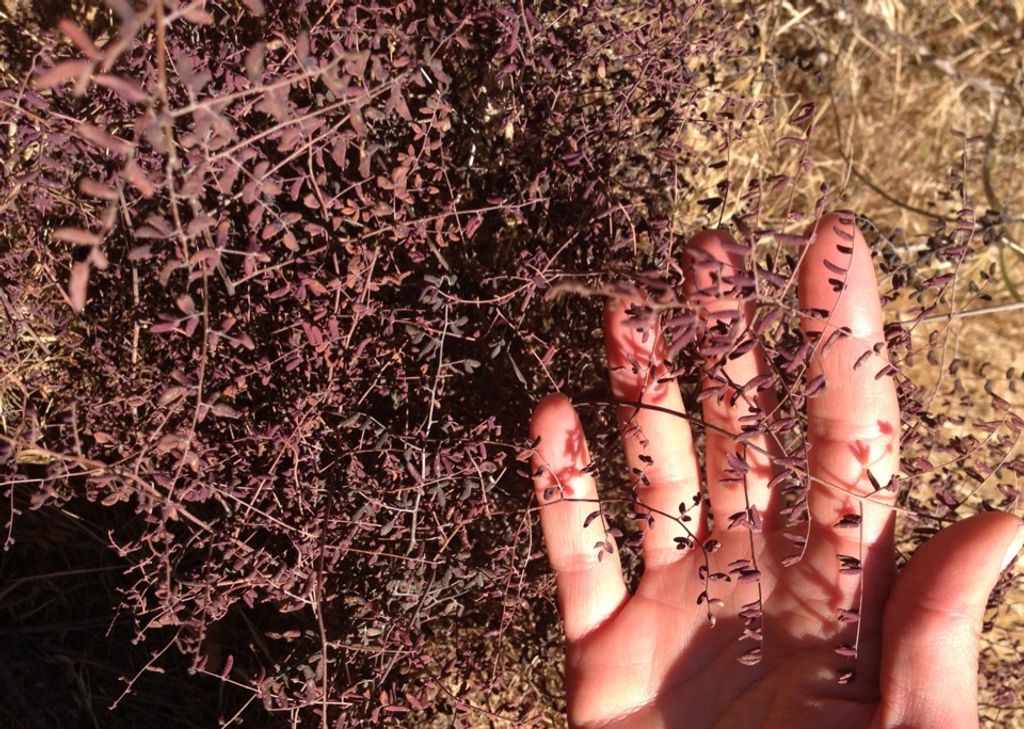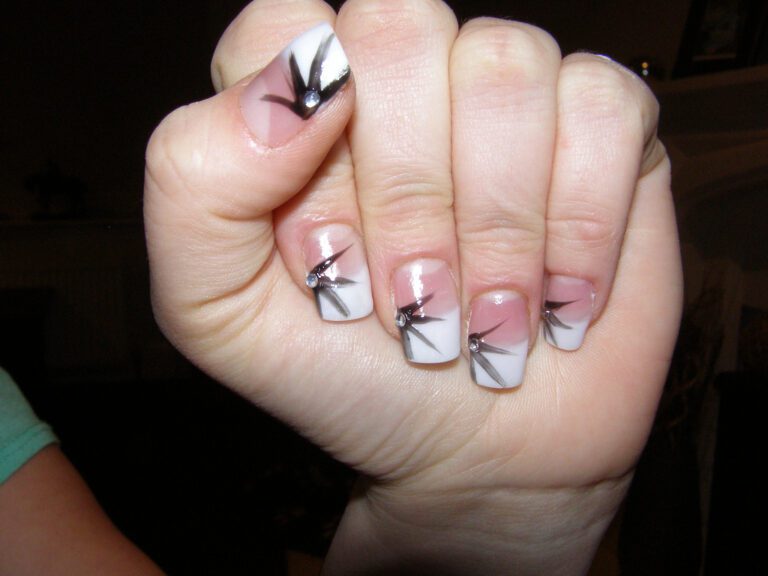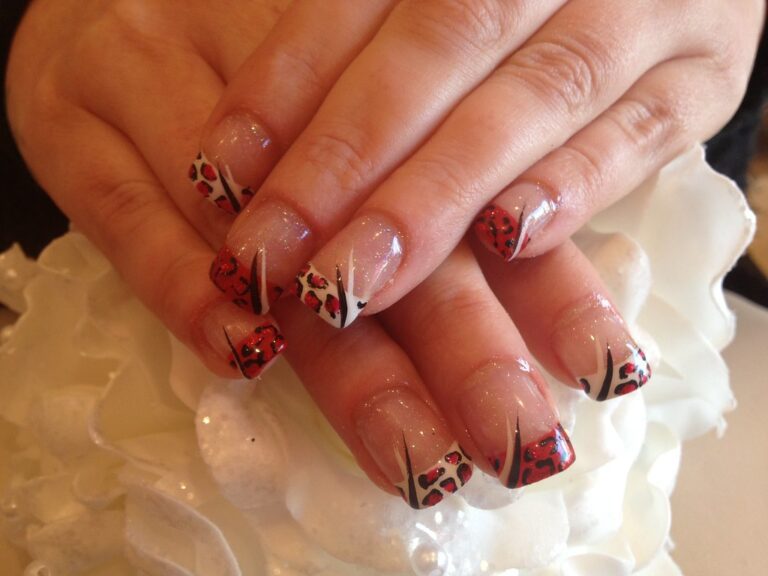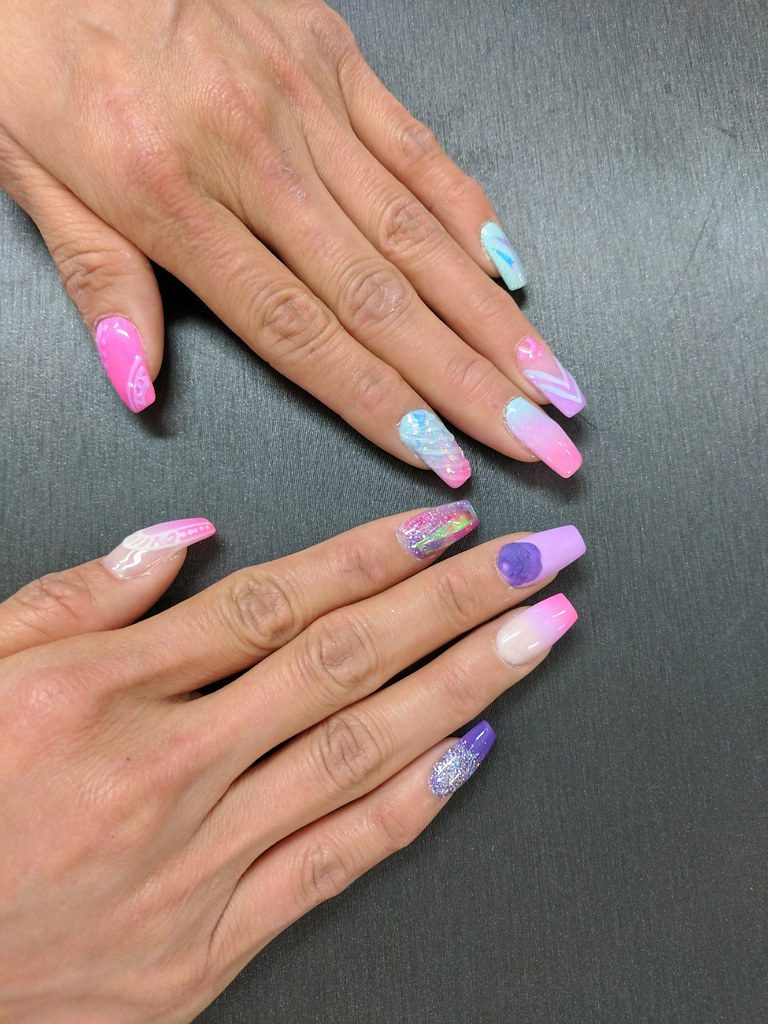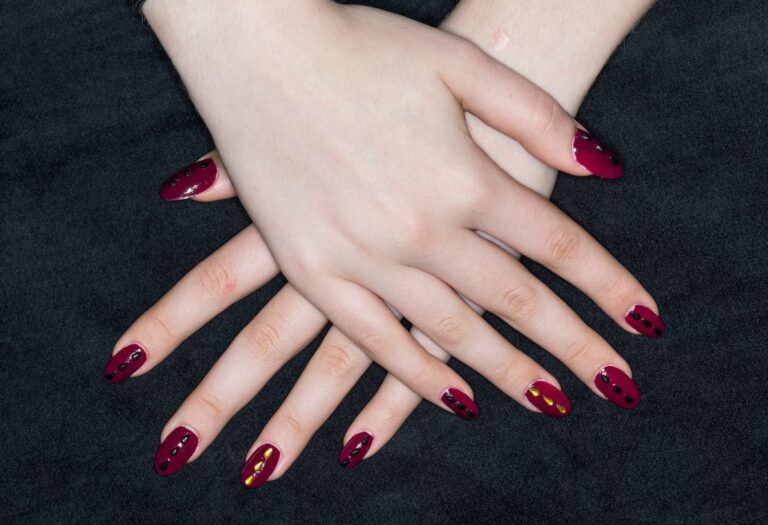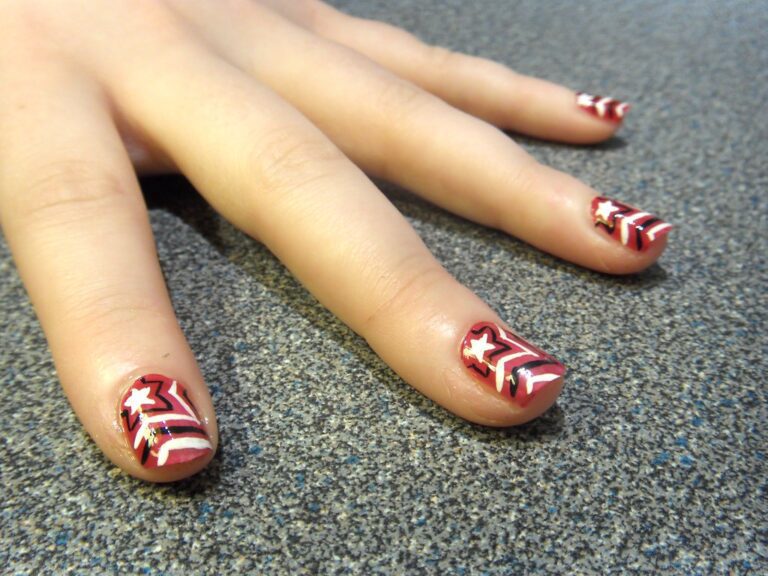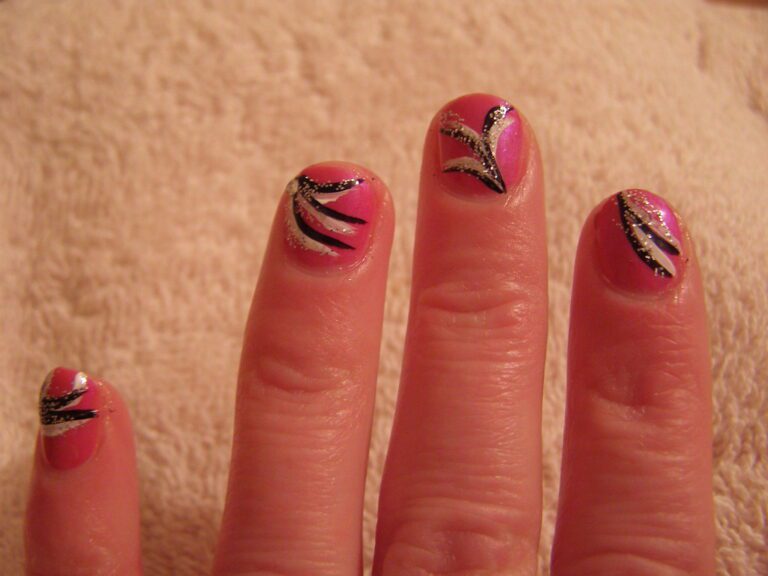“Brittle Mysteries: Why Nails Become Brittle Exposed”
In this article, we delve into the intriguing world of nail brittleness and explore the various factors that contribute to this common nail condition. From the science behind brittle nails to practical tips for maintaining strong and healthy nails, we uncover the mysteries surrounding this issue.
Key Takeaways
- Maintaining a balanced diet rich in vitamins and minerals is essential for promoting nail health and preventing brittleness.
- Environmental factors such as water exposure, humidity, and chemical substances can significantly impact nail durability and strength.
- Medical conditions, including thyroid disorders and fungal infections, can manifest as brittle nails and should be addressed with proper medical care.
- Aging naturally affects nail composition, but preventative measures such as moisturizing and protecting the nails can help minimize age-related brittleness.
- Effective nail care routines, choosing the right nail products, and exploring home remedies can contribute to maintaining strong and resilient nails.
Unveiling the Science of Brittle Nails

The Anatomy of a Nail
To truly understand why nails become brittle, one must first comprehend their basic structure. A nail is primarily composed of keratin, a type of protein that is also found in skin and hair. This resilient substance forms the nail plate, which is the hard part of the nail that we can see and touch.
The nail originates from the nail matrix, a tissue under the skin at the nail’s base where new cells are generated. As these cells grow and harden, they push out the older nail cells, creating what we recognize as nail growth. The health of the nail matrix is crucial, as it determines the strength and appearance of the nail.
Cuticles play a protective role, sealing the space between the nail and the skin, preventing the intrusion of bacteria and other pathogens. Meanwhile, the nail bed beneath the nail plate provides nourishment and support, ensuring that the nail remains attached to the finger.
Tip: Regular moisturizing of the cuticles and nail bed can help maintain nail health and prevent brittleness.
Understanding the anatomy of a nail is the first step in identifying the causes of brittleness and implementing effective care routines.
Understanding Nail Brittleness
Brittle nails are a common concern, often characterized by splitting, cracking, or easy breaking. This condition can be a sign of deeper health issues or simply the result of external stressors. To comprehend nail brittleness, one must first recognize that nails are primarily composed of keratin, a type of protein that’s also found in skin and hair.
Several factors can lead to the weakening of this keratin structure, including dehydration, overexposure to harsh chemicals, and repetitive physical trauma. Additionally, internal factors such as hormonal imbalances or nutritional deficiencies play a crucial role in maintaining nail strength and resilience.
Preventative measures are key in managing brittle nails. Here are a few tips:
- Keep nails properly hydrated with moisturizers.
- Limit exposure to water and detergents.
- Wear gloves when using cleaning agents.
Remember: Consistent care and protection can significantly reduce the risk of brittleness and keep your nails strong and healthy.
Factors That Compromise Nail Integrity
The integrity of our nails can be compromised by a variety of factors, ranging from external environmental stressors to internal physiological changes. Chemical exposures, such as frequent use of nail polish remover, can strip nails of their natural oils, leading to brittleness. Similarly, repeated wetting and drying of nails can weaken their structure, making them more susceptible to breakage.
Genetic predisposition also plays a role in nail health. Some individuals may be more prone to brittle nails due to their genetic makeup. Additionally, lifestyle choices, such as diet and smoking, can adversely affect nail strength and resilience. It’s important to consider these factors when addressing nail brittleness and to take proactive steps to mitigate their impact.
Tip: To maintain nail integrity, minimize exposure to harsh chemicals and ensure your nails are properly hydrated and nourished.
Nutritional Deficiencies and Nail Health

The Role of Vitamins and Minerals
The health of our nails is deeply intertwined with the nutrients we consume. Vitamins and minerals play a crucial role in maintaining nail strength and preventing brittleness. For instance, biotin, a B-complex vitamin, is renowned for its ability to fortify nail hardness and enhance growth. Similarly, iron is essential to prevent spoon-shaped nail deformities that can arise from anemia.
A deficiency in these nutrients can lead to noticeable changes in nail appearance and texture. Here’s a quick overview of key vitamins and minerals, along with their benefits for nail health:
- Biotin (Vitamin B7): Promotes nail growth and strength.
- Iron: Prevents ridges and concave nail shapes.
- Zinc: Aids in nail tissue growth and repair.
- Calcium: Essential for nail hardness.
Tip: Consistently including a balanced diet rich in these nutrients can significantly improve nail health over time.
It’s important to recognize that while supplements can help, they should not replace a varied diet. If you suspect your nails are brittle due to a nutritional deficiency, consulting with a healthcare provider is recommended to tailor a plan that addresses your specific needs.
Impact of Diet on Nail Condition
The health of your nails is significantly influenced by the nutrients you consume. A balanced diet rich in vitamins and minerals is crucial for maintaining strong and resilient nails. For instance, iron deficiency can lead to brittle and spoon-shaped nails, while a lack of biotin, a B vitamin, is associated with nail weakness.
Essential nutrients for nail health include:
- Protein: the building block of nails
- Iron: prevents spoon-shaped nails
- Zinc: aids in nail growth
- Omega-3 fatty acids: promote nail strength
Incorporating a variety of iron-rich foods such as lean red meat, spinach, lentils, chickpeas, and other legumes into your diet can help address iron deficiencies. Similarly, ensuring adequate intake of biotin can be achieved through foods like eggs, almonds, and sweet potatoes.
Tip: Consistently including these nutrients in your meals can improve not only your nail condition but also your overall health.
Identifying Deficiency-Related Brittleness
Brittle nails can often be a telltale sign of underlying nutritional deficiencies. Essential nutrients play a pivotal role in maintaining the strength and health of your nails. A lack of vitamins and minerals such as biotin, iron, and zinc can lead to noticeable changes in nail condition.
To identify deficiency-related brittleness, observe your nails for symptoms such as discoloration, ridges, and increased breakage. These changes can hint at specific nutrient shortages. For instance, iron deficiency may cause nails to become thin and concave, while insufficient zinc can lead to white spots on the nails.
Tip: Consistently monitoring your nail health can provide early indications of nutritional imbalances. If you suspect your brittle nails are due to a deficiency, consider consulting a healthcare professional for a proper assessment and dietary recommendations.
Incorporating a balanced diet rich in fruits, vegetables, lean proteins, and whole grains is crucial for nail health. Additionally, supplements may be recommended to address specific deficiencies. Here’s a quick guide to the nutrients that are most important for nail strength:
- Biotin: Supports nail growth and strength
- Iron: Prevents spoon-shaped nails and vertical ridges
- Zinc: Essential for tissue growth and repair
- Vitamin C: Necessary for collagen production
- Omega-3 Fatty Acids: Promote nail flexibility and reduce brittleness
Environmental Influences on Nail Durability

Effects of Water and Humidity
Prolonged exposure to water can significantly weaken the structure of nails, leading to increased brittleness. When nails absorb water, they expand and can become softer and more prone to breaking. Conversely, excessive dryness due to low humidity can cause nails to become too hard and consequently, more brittle. Maintaining a balance is therefore crucial for nail durability.
- Regularly moisturizing nails can help counteract the effects of water and humidity.
- Wearing gloves during water-intensive tasks can protect nails from overexposure.
- Using a nail hardener can provide an additional layer of protection against water damage.
Tip: To minimize water damage, apply a clear nail hardener after performing tasks that involve prolonged water exposure, such as washing dishes or swimming.
Chemical Exposures and Their Consequences
Chemical exposures can have adverse effects on nail health. Nail salon technicians, in particular, face chronic exposure to volatile organic compounds (VOCs), which can lead to adverse health outcomes including cancer. It’s important to be aware of the potential risks associated with prolonged exposure to these chemicals. Additionally, certain nail polish chemicals, when introduced to water systems, can be toxic to aquatic organisms, disrupting ecosystems and food chains. It’s crucial to consider the environmental impact of these chemicals and their potential dangers. Implementing proper safety measures and using protective equipment can help mitigate the risks associated with chemical exposures in nail care settings.
Seasonal Changes and Nail Brittleness
As the seasons shift, so too does the condition of our nails. During colder months, nails can become more brittle due to reduced humidity and the harsh effects of indoor heating. Conversely, the summer heat may lead to increased nail flexibility but also heightened exposure to UV rays which can weaken nail structure.
Hydration is key, regardless of the season. Maintaining moisture levels in the nails and cuticles can help combat the dryness associated with winter and the overexposure to water activities in summer. Here are some tips to keep in mind:
- Use gloves when cleaning or going out in cold weather to protect your nails from harsh chemicals and extreme temperatures.
- Apply a nourishing cuticle oil regularly to promote nail flexibility and strength.
- Opt for a nail hardener or strengthener during the winter months to provide an extra layer of protection.
Tip: Seasonal nail care should be adjusted to address the unique challenges posed by the changing environment. Tailoring your nail care routine to the time of year can help maintain nail health and prevent brittleness.
Medical Conditions Linked to Brittle Nails

Thyroid Disorders and Nail Health
Thyroid disorders can have a profound impact on the health and appearance of nails. An overactive thyroid or hyperthyroidism can lead to symptoms such as brittle, dry, and thick nails with ridges. Conversely, hypothyroidism, characterized by an underactive thyroid, often results in poor nail health, manifesting as weak, thin, and lackluster nails.
Thyroid-related nail changes are not just cosmetic concerns but may also signal underlying health issues. It’s important to recognize the signs and consider consulting a healthcare professional if you notice significant alterations in your nail condition.
Tip: Regular monitoring of nail health can be an effective way to gauge thyroid function and detect imbalances early on.
Understanding the connection between thyroid function and nail health is crucial for maintaining both your overall well-being and the integrity of your nails.
Fungal Infections and Their Impact
Fungal infections can have a significant impact on nail health. Changes in nail appearance, such as discoloration, thickening, and distortion, are common symptoms of fungal nail infections. These infections are often caused by fungi, particularly dermatophytes, that thrive in warm and moist environments. This makes nails susceptible to infection. It’s important to identify and address fungal nail infections promptly to prevent further damage and maintain nail integrity. Seeking professional advice and treatment is crucial for managing fungal nail infections effectively.
Other Systemic Diseases Affecting Nails
While fungal infections and thyroid disorders are common culprits behind brittle nails, a myriad of [other systemic diseases](https://moddermatology.com/fremont-nail-diseases/) can also play a significant role. Diseases that affect the body’s connective tissues, such as lupus or rheumatoid arthritis, can manifest in the nails as brittleness, discoloration, or abnormal growth patterns. Similarly, conditions that impair circulation, like diabetes, can lead to decreased nail strength and health due to insufficient nutrient and oxygen delivery.
Certain medications used to treat systemic diseases may also contribute to nail brittleness. For instance, chemotherapy drugs are known to cause changes in nail texture and growth. It’s essential to consider the potential side effects of medications when assessing nail health.
Preventative care and early detection of systemic diseases can mitigate their impact on nail health. Regular check-ups and blood tests can help identify underlying health issues that may be contributing to nail brittleness, allowing for timely intervention and treatment.
The Role of Aging in Nail Brittleness

Natural Changes in Nail Composition
As we age, our bodies undergo a myriad of changes, and our nails are no exception. The nails may become more brittle, a condition often attributed to a decrease in natural oils and moisture within the nail plate. This can lead to nails that are more prone to splitting and breaking.
Blood flow to the nails also diminishes with age, which can result in slower nail growth and weaker nails. The skin around the nails changes too, losing elasticity and moisture, which can indirectly affect nail health.
To maintain nail strength as we age, it is important to keep nails hydrated and to avoid excessive exposure to water and harsh chemicals.
Understanding these natural changes is crucial for developing effective care routines to manage age-related nail brittleness and maintain healthy nails throughout one’s life.
Preventative Measures for Age-Related Brittleness
As we age, the composition of our nails undergoes natural changes, leading to increased brittleness and decreased strength. It’s important to prioritize nail hydration and moisture retention to combat these changes. Implementing a regular moisturization routine and using nail products with hydrating properties can significantly improve the condition of aging nails. Additionally, maintaining a balanced diet rich in essential vitamins and minerals is crucial for supporting nail health and strength. Here are some practical tips for maintaining strong nails:
- Prioritize nail hydration and moisture retention
- Use nail products with hydrating properties
- Maintain a balanced diet rich in essential vitamins and minerals
Remember to prioritize nail hydration and moisture retention, and consult with a professional for personalized recommendations.
Practical Tips for Maintaining Strong Nails

Effective Nail Care Routines
Maintaining strong, healthy nails is not just a matter of aesthetics but also of personal hygiene and health. An effective nail care routine involves several key practices that are easy to implement in your daily life. Regularly washing your hands with soap and warm water is essential for preventing the buildup of bacteria and promoting overall nail health. After washing, moisturizing your hands and cuticles can prevent dryness and cracking.
Trimming nails after a bath or shower is advisable as they are softer and easier to shape. Using the right tools, such as a nail clipper or nail scissors, is crucial for a clean cut. Keeping nails at a manageable length can minimize the risk of breakage and make maintenance more straightforward. Additionally, conditioning treatments, especially those containing CF formulas, can help to strengthen the nails and improve their resilience.
Remember, while regular care is important, avoid over-manipulating your nails as this can lead to damage and brittleness over time.
Choosing the Right Nail Products
Selecting the appropriate nail products is crucial for maintaining strong, healthy nails. When choosing nail polishes, consider the brand’s reputation for quality and durability. For instance, well-established brands like OPI and Essie are known for their long-lasting formulas. On the other hand, luxury brands such as Gucci Beauty and Chanel offer premium options that combine high-quality with fashion-forward colors.
It’s also important to look for products that are free from harmful chemicals. Many nail polishes now boast ‘3-free’ or ‘5-free’ labels, indicating they do not contain certain toxic substances like formaldehyde, toluene, and DBP.
Tip: Always apply a base coat before your nail polish to protect your nails and a top coat after to seal in the color and add a layer of protection.
Consider your skin tone when selecting a color. Warmer undertones are complemented by shades with a yellow or orange base, while cooler undertones pair well with colors that have a blue or purple base. Neutral skin tones have the versatility to pull off a wide range of colors.
Here’s a quick reference list of nail polish types to consider:
- Sheer Enamel: Offers a natural look and is best for a subtle finish.
- Gel Couture: Provides a gel-like appearance without the need for UV light.
- Long-wearing formulas: Ideal for those who want to avoid frequent touch-ups.
- Quick-dry options: Perfect for on-the-go applications.
Remember, the right nail products can not only enhance the appearance of your nails but also contribute to their overall health and strength.
Home Remedies and Their Efficacy
When it comes to maintaining strong nails, consistency is key. Establishing a regular nail care routine that includes gentle filing, moisturizing, and protective measures can significantly improve nail strength and resilience. Additionally, paying attention to your diet and ensuring adequate intake of essential vitamins and minerals can further enhance the health of your nails. Remember, healthy nails start from within. Here are some simple yet effective tips for maintaining strong nails:
- Keep nails clean and dry to prevent bacterial and fungal infections.
- Use a moisturizing nail cream or oil to nourish and hydrate the nails and cuticles.
- Wear gloves when performing household chores or working with harsh chemicals to protect your nails from damage.
- Avoid using nails as tools for opening or scraping, as this can weaken and break them.
- Trim nails regularly and file them in one direction to prevent splitting and breakage.
Incorporating these practices into your daily routine can make a noticeable difference in the strength and appearance of your nails. Remember, healthy nails are a reflection of overall well-being and self-care.
If you’re looking for practical tips for maintaining strong nails, you’ve come to the right place. At NAILinspire.com, we are dedicated to providing the ultimate online nail art design library, where you can find valuable advice, tutorials, and inspiration for keeping your nails healthy and beautiful. Visit our website today to discover a world of nail care expertise and take the first step towards achieving the perfect nails you’ve always wanted.
Frequently Asked Questions
What causes nails to become brittle?
Nail brittleness can be caused by a variety of factors including nutritional deficiencies, environmental influences, medical conditions, and aging. Understanding these factors is crucial in addressing brittle nails.
How can diet impact nail health?
Diet plays a significant role in nail health. Nutritional deficiencies, particularly in vitamins and minerals, can lead to brittle nails. Consuming a balanced diet rich in essential nutrients is essential for maintaining strong and healthy nails.
Are there specific medical conditions that contribute to brittle nails?
Yes, certain medical conditions such as thyroid disorders, fungal infections, and systemic diseases can affect nail health and contribute to brittleness. It’s important to address these underlying conditions for overall nail wellness.
What are some practical tips for maintaining strong nails?
Practicing effective nail care routines, choosing the right nail products, and exploring home remedies can help maintain strong nails. Consistent care and attention to nail health are key to preventing brittleness.
Can aging affect nail brittleness?
Yes, aging can lead to natural changes in nail composition, resulting in increased brittleness. However, there are preventative measures that can be taken to minimize age-related nail brittleness.
How do environmental factors impact nail durability?
Environmental factors such as water, humidity, and chemical exposures can have significant effects on nail durability. Understanding these influences is important for protecting nails from brittleness and damage.

